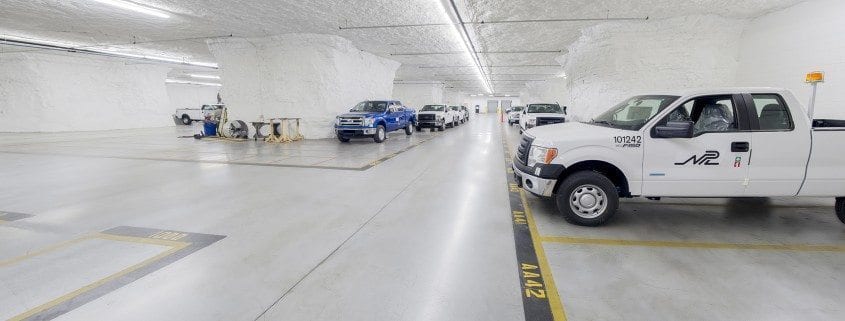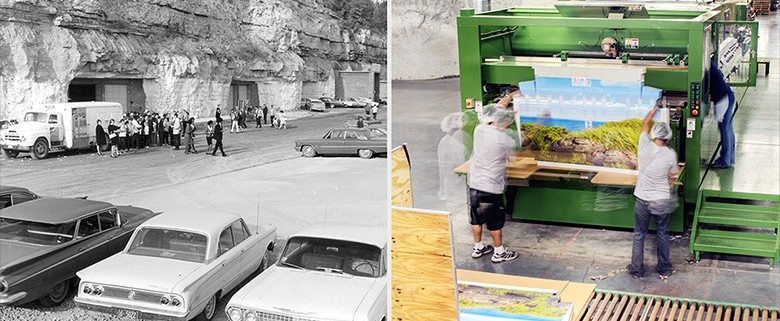In the shadow of a Ford plant, auto suppliers toil 100 feet down in a former Kansas City limestone mine.
I’ve been to a lot of unusual places in my long career as a journalist, but SubTropolis in Kansas City takes the cake. It’s the world’s largest underground storage facility, 6 million square feet 80 to 150 down in a former limestone mine. The limestone is 270 million years old, but the use of these caves for climate-controlled businesses only dates to 1964.
SubTropolis, owned by the wealthy Hunt family, is like an underground city, with the major benefit in hot-summer, cold-winter Kansas City of being a steady 68 to 70 degrees Fahrenheit. No wonder the place gets a 100 percent Energy Star rating — no heating or air conditioning necessary! The U.S. Post Office stores $6 billion in stamps down here, and LightEdge Solutions maintains a naturally cooled $58 million data center.
I’m down in SubTropolis for Automotive Alley, the newest addition. In 2011, Ford announced a $1.1 billion expansion of its Claycomo assembly plant, which makes the F-150 truck (America’s bestselling vehicle) and the Transit van. SubTropolis borders Ford’s property, so what better location for Ford suppliers?
On the surface here, Ford maintains a 29-acre logistics facility where it stages 1,800 Transits, 80 percent of which get shipped by rail from here. But a lot of them go underground, where three companies, Adrian Steel, Knapheide and Ground Effects, have only recently begun “upfitting” them for customers like Comcast, Duke Energy, Western Pest Control, Geek Squad and Halliburton.
First stop: Canada-based Ground Effects, where plant manager April Adams shows me rows of F-150s that are having bed liners sprayed in (a $475 factory option). Across the way, Transits are getting cargo spray floors, Kicker subwoofers and remote starts. The whole spraying thing gets me concerned about ventilation down here, but President and CEO Ora Reynolds and VP Mike Bell assure me that the place is naturally air conditioned through 17 openings. “We have the EPA down here,” Bell says. “Do you think they’d allow us to have bad air quality?” Go to MNN.com for more…
LEARN MORE: What Is SubTropolis?



